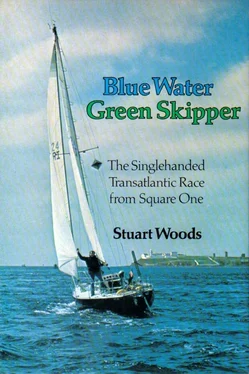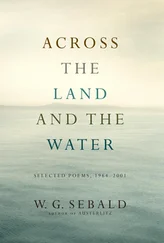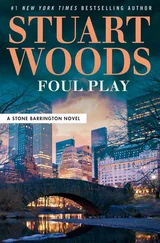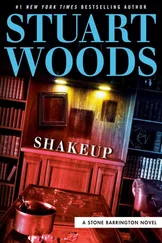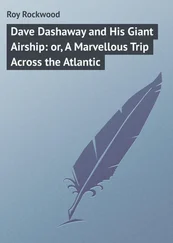We began to clean up the boat and stow the gear, but The Kid, it appeared, was not yet finished with my education. I came very near to throwing him overboard when he began to explain “... how we fold a sail.”
I thanked Archie for the best sail I had ever had. I had been very impressed with the way he had brought us around the Bill in such awful conditions and with his skill in tacking us up the river. I had learned a lot and, surprisingly, was not nearly as tired as after the Golden Apple delivery, although the passage in Mist had been much more arduous. Now I left Irish Mist II, and clambered onto the dock and into the arms of Ann, who, clever girl, had driven down from London.
We had a pleasant evening in Lymington, and next morning, after running a few local errands, we embarked on the car ferry to the Isle of Wight, which I had never visited. The purpose of the trip was to discuss the rigging of my boat with Ben Bradley of Spencer’s, the riggers, but we did some shopping in Cowes’s narrow High Street first. It was there I discovered one of the most comfortable of sailing garments, the Javlin Warm Suit, which is a sort of thermal underwear, retaining heat and preventing condensation under oilskins. This would prove to be a valuable purchase.
At Spencer’s, Ben Bradley and I agreed on the size and composition of my boat’s rigging — Ron had suggested wire rope rather than the standard solid rod rigging, which was fine for offshore racing but didn’t last as long. We also went a size up on the standard, for extra strength.
Next day, I rang Shirley Clifford in Poole, just to see how she was and to report on the progress of Golden Harp, and she reminded me of something I had forgotten. The Azores and Back single-handed race (AZAB), sponsored by the magazine Yachting Monthly, was starting on Saturday from the Royal Cornwall Yacht Club in Falmouth. She and Richard would be there, and so would Ewan Southby-Tailyour. Why didn’t I come down? Why not, indeed? I hired a car, and on Thursday afternoon took off for the West Country.
I arrived at the Royal Cornwall to find fifty yachts preparing for the next day’s start. Almost immediately I bumped into Robert Hughes, the Hasler self-steering expert from Gibb, who had at his disposal a very fast speedboat, with which he could go from yacht to yacht, offering advice and helping to solve problems. Having never so much as seen a single-hander’s boat this was a marvelous opportunity for me, and I made mental notes on layout, control lines, etc.
Richard and Shirley Clifford turned up with their children, and I met Frank Page, The Observer ’s yachting correspondent, and his lovely wife, Sammie; Liz Balcon and Angela Green, also from the Observer staff; Angus Primrose, the yacht designer who was sailing one of his own designs, a Moody 33, in the race, and his wife and daughter, Murlo and Sally; Andrew Bray of Yachting Monthly, who was sailing his Pioneer 10 in the race; and briefly, Clare Francis, the girl who had already done a transatlantic crossing in a Nicholson 32, and now had an Olsen 38 at her disposal, courtesy of her sponsors, Robertson’s jams.
I had dinner with Richard and Shirley, and the following day, Murlo and Sally Primrose and I joined Robert Hughes and his brother, Brian, on whose fast boat we would watch the start of the race. The wind was very light, so there was little drama before the start, but shortly after the start we all became very annoyed with a French spectator boat which was sailing behind Clare Francis flying a spinnaker, thus taking Clare’s wind and making it difficult for her to get her own spinnaker to fill. We roared up to the French yacht and, after a few loud words, they bore away and left her alone. It had been a rotten thing to do.
The fleet slowly drifted toward open water, and after a final goodbye to Angus Primrose on Demon Demo, we roared across the bay to my favorite village in Cornwall, St. Mawes. Then, back to the Royal Cornwall, now strangely empty, and the drive to Fowey, farther up the coast, where I was meeting Richard Clifford and Ewan Southby-Tailyour at a Royal Cruising Club rally. I arrived in the pretty village and got a ferry out to Ewan’s yacht, Black Velvet, only to discover him drinking on another nearby boat. We passed a pleasant afternoon, and Richard arrived from Falmouth in Shamaal II, his Contessa 26, single-handed. There was then one of the nicest sights I have ever seen on the water. Three of the larger yachts at the rally were tied together in the river, and a very large and exuberant cocktail party took place in the lovely twilight. I added Fowey to my list of harbors to visit.
Richard Clifford invited me for a Sunday morning sail in Shamaal, and I accepted with pleasure. We just went out of the river for a bit, then back to a mooring, but it was the first time I had ever sailed on a single-hander’s boat, and it was nice to see how expertly Richard handled her. We followed our sail with a lunch of fresh mackerel.
Richard, as I have mentioned, is a captain in the Royal Marines, and takes great pride in his fitness. He climbs the mast of Shamaal without benefit of bosun’s chair or steps, just right up it like a monkey. He also takes pride in sailing Shamaal without an engine of any kind, and handles her with great flair and confidence.
He gave me something to think about when he said that during the last OSTAR, he had been swept overboard by a wave, saved only by an arm which caught a guardrail. He said that, after struggling back on board, he sat down in the cockpit and wept. I thought, if this hard, tough, superbly fit Marine officer, trained to endure the worst of hardship, had been reduced to that state by exhaustion and terror, what the hell would happen to me under similar circumstances? I could only hope that I would never have to find out.
Back in Cork, the launch was set for June 28. I wrote out a launch invitation and a press release. I had them both printed, and I mailed about fifty invitations to friends and people who had contributed equipment or help on the boat, and I sent press releases to all the Irish newspapers, plus the television service, RTE, along with an invitation which also invited everybody to a post-launch celebration at the Royal Cork. I also gave invitations to half a dozen of the foremen and workmen in the yard who had been particularly helpful, and to the office staff, all of whom had been very nice. Then I placed an invitation in the hands of Pat Hickey, a director of the yard, and handed one to Barry Burke.
Normally I sleep like a stone, but for the rest of June prior to the launching, I slept badly. Nor could I read. Even absorbing books like Adlard Coles’s Heavy Weather Sailing couldn’t hold my attention. Every time I read of some heavy weather maneuver I began thinking about how Golden Harp would react under the circumstances.
But there were bright spots. Vincent Dolan of J. B. Roche, a Cork chandlery, donated a twenty-five-pound CQR anchor and eight fathoms of chain to the project. Alan Best of Croxon & Cobbs, a Dublin chandlery, gave me a trade discount on any gear I wished to purchase from him — they were particularly good on charts — and Western Marine, in Dalkey, gave me a generous discount on the four very expensive Beaufort life jackets I wanted for the boat. Cotter Electronics, a Cork instrument installation company, came and did a first-class job of fitting the Brookes & Gatehouse equipment and the other electrical gear, and gave me a very low price for a great deal of highly skilled work. And George Hayde and his people at Lucas came through on their promise of technical help, doing all the wiring on the batteries and alternators. They also contributed the splitting diodes and isolating switches for the batteries, a generous contribution, indeed, coupled with the expensive, marinized alternator.
Читать дальше
